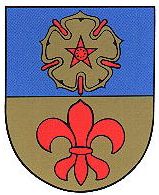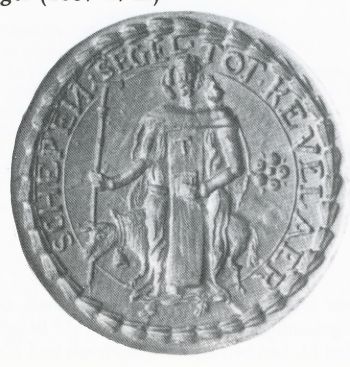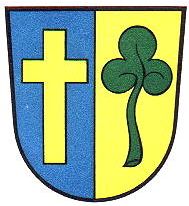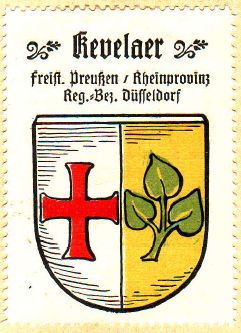Kevelaer: Difference between revisions
Knorrepoes (talk | contribs) No edit summary |
Knorrepoes (talk | contribs) No edit summary |
||
| Line 28: | Line 28: | ||
{|align="center" | {|align="center" | ||
|align="center"|[[File: | |align="center"|[[File:kevelaer2.jpg|center]] <br/>The arms as used by the city | ||
|align="center"|[[File:kevelaer.hagd.jpg|center]] <br/>The arms in the [[Kaffee Hag albums]] +/- 1925 | |align="center"|[[File:kevelaer.hagd.jpg|center]] <br/>The arms in the [[Kaffee Hag albums]] +/- 1925 | ||
|} | |} | ||
Revision as of 15:15, 25 June 2011
| Heraldry of the World Civic heraldry of Germany - Deutsche Wappen (Gemeindewappen/Kreiswappen) |
KEVELAER
State : Nordrhein-Westfalen
District (Kreis) : Kleve (until 1974 Geldern)
Additions : 1969 Kervendonk, Kervenheim, Kleinkevelaer, Twisteden, Wetten, Winnekendonk
Origin/meaning :
The arms were officially granted on November 19, 1973.
Kevelaer belonged until the 17th century to Wetten. In the 17th century the pilgimage to Kevelaer started and the town was separated from Wetten.
The first and only known seal of Kevelaer shows St. Anthony, the patron saint of the town. To the left of the saint the medlar flower of the Counts of Geldern. The medlar was also used in the arms of Wetten.
| The seal of Kevelaer from 1687-1742 |
In the 19th century the town started to use arms, which have not officially been granted. These arms were based on an inscription in a stone in the shrine in the town and show in the right part the cross of St. Anthony and in the left a trefoil. It is likely that the trefoil originally is the medlar.
| The arms as used by the city |
The arms in the Kaffee Hag albums +/- 1925 |
The present arms are a combination of the medlar of Geldern and Wetten and the fleur-de-lis of the arms of Kervenheim.
Literature : Stadler, 1964-1971, 8 volumes; Frankewitz, S. en G. Fenner : De zegels der steden en dorpen in het overkwartier van Gelre/Die Siegel der Städte und Dörfer im geldrischen Oberquartier. Venlo, z.j. 291 blz.(bilingual); Nagel, R. : Rheinisches Wappenbuch, Köln, 1986; Kaffee Hag albums 1920s.




